University College London
Type of resources
Topics
Keywords
Contact for the resource
Provided by
Years
Formats
Representation types
Update frequencies
Scale
Resolution
-
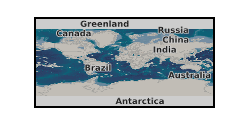
This UKCCSRC (UK Carbon Capture and Storage Research Centre) Call 1 project involved the development, testing and validation of a two-fluid transient flow model for simulating outflow following the failure of high pressure CO2 pipelines is presented. The project made use of experimental data and used experimental data available from other UK/EC funded projects. The model developed accounts for thermal and mechanical non-equilibrium effects during depressurisation by utilising simple constitutive relations describing inter-phase mass, heat and momentum transfer in terms of relaxation to equilibrium. Pipe wall/fluid heat exchange on the other hand is modelled by coupling the fluid model with a finite difference transient heat conduction model. This paper describes the model, the details of its numerical solution and its validation as well as parametric analysis of relevant parameters. http://www.sciencedirect.com/science/article/pii/S1750583614002394, DOI: 10.1016/j.ijggc.2014.08.013. UKCCSRC grant UKCCSRC-C1-07.
-
Measurements of sediment properties (incl. organic and carbonate content), radionuclides (210Pb, 137Cs, 241Am) and elements (including mercury, nickel, copper, zinc, and lead) in lake sediment successions. Radionuclide dating provides a reliable chronology of sediment ages from the mid-19th century (sometimes only 20th century) to the present (2016). The dataset comprises a standardised matrix of multiple measured sediment variables (element values per mass) against stratigraphic depth for 8 lakes. In these water bodies multiple core datasets exist, one collected from the littoral zone, one of intermediate depth and one from the deepest area. The deepest core was used for 210Pb dating. The intermediate and littoral depth cores are not dated, except at Esthwaite where the littoral core (29328_ESTH_LITT.csv) had been previously collected, 210Pb dated and measured for organic and carbonate content. Full details about this dataset can be found at https://doi.org/10.5285/87dec506-ca7f-4b57-a605-486ec9d8cca2
-
These data are the recorded outcomes of binary male choice experiments. Teleopsis dalmanni males were able to choose to mate with either a large or a small female. Individuals were taken from laboratory stock populations. Also included is information on male genotype indicating if he is a carrier of a sex-ratio distorting or nondistorting X chromosome, and a calculation of male preference. The second dataset additionally contains measures of male eyespan and thorax length obtained by measuring images. Full details about this nonGeographicDataset can be found at https://doi.org/10.5285/d6c36f89-07f1-4bcc-96a0-f5302fd3ccec
-
The data contain phenotype measures of Teleopsis dalmanni males. Individuals were all taken from a laboratory stock population. Individuals carried either a nondistorting wildtype X chromosome or a sex-ratio distorting X chromosome. Data were obtained by measuring images of testes, accessory glands, thorax and eyespan, and direct counts of fertilised (hatched) and unfertilised egg. Full details about this nonGeographicDataset can be found at https://doi.org/10.5285/6e4c5823-35f5-4c90-b616-2190d87c0391
-
The raw data contain genotype information for offspring collected from controlled crosses of Teleopsis dalmanni. Parents were taken from laboratory stock populations. Offspring genotypes were assigned by sizing a microsatellite, which distinguishes sex-ratio distorting and nondistorting X chromosomes. Also included is information on offspring sex and food treatment. The processed data summarises genotype counts by collection date and cage id (date/food treatment/cage). Also included is a fitness calculation for each genotype in each cage. Full details about this nonGeographicDataset can be found at https://doi.org/10.5285/71529a64-6c1b-4c8f-ae3f-7c4870efd976
-
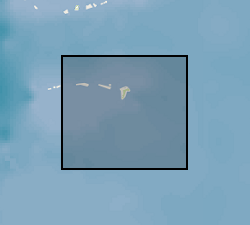
Nannofossil assemblage data IODP expedition U359 produced from NERC Grant NE/N014049/1. Data collected from the Maldives, Indian Ocean. NERC grant award abstract: IOPD Expedition 359, Sea Level, Currents, and Monsoon Evolution in the Indian Ocean will be investigating the Maldives Ridge which stretches southward through the Indian Ocean as a double chain of coral atolls. These atolls lie along a volcanic ridge which formed over a mantle hotspot as the Indian plate moved northwards. As the ridge cooled it subsided to be replaced at the surface by the string of atolls and between them deeper troughs.Within these troughs vast thicknesses of carbonate sediments derived from the ridge have built up intermixed with open ocean sediments. These sediments provide a unique opportunity to examine the relationships between open ocean planktonic carbonates and shallow marine carbonates - which normally are difficult to compare. This project seeks to exploit this opportunity to see whether there are any consistent correlations between changes in the pelagic carbonate producing coccolithophores and the shallow marine carbonate system. If such correlations do occur it will provide strong evidence that abiotic factors such as temperature and sea water chemistry have strong influences on large scale evolution of these systems. Conversely if no such linkages can be observed it will cal into question the degree to which changes in for instance coccolithophore abundance or calcification are interpreted as being caused by abiotic factors. The great thicknesses of the successions also mean that intervals of abrupt change in plankton assemblages can be studied at higher resolution than is normally possible. This will provide the opportunity to test if such changes are caused by environmental events. The project will specifically focus on size variation in the dominant group of coccolithophores the reiticulofenestrids. This group shows a long term size reduction but this is formed of series of abrupt size reduction events separated by extended intervals of size increase. This will be the first time the set of size reduction events from the middle Miocene to the recent have been studied systematically in one place as well as testing to see if they correlate with change in environmental proxies or changes in the shallow marine carbonate system.
-
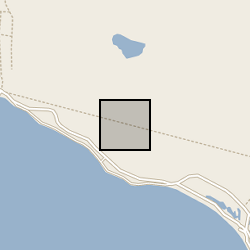
The dataset contains oxygen and carbon isotope measurements from multiple-shell samples of the ostracod Heterocypris punctata, from Core FP2 taken from Freshwater Pond, Barbuda. A chronology for the core is provided by radiocarbon dates. The data, which are further described in Burn et al. (2016) The Holocene, 26(8), 1237-47, provide a proxy for changing rainfall patterns for the period 2000-1555 CE.
-
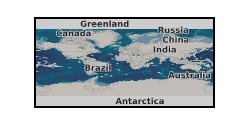
This poster on the UKCCSRC Call 2 project The Development and Demonstration of Best Practice Guidelines for the Safe Start-up Injection of CO2 into Depleted Gas Fields was presented at the CSLF Call project poster reception, London, 27.06.16. Grant number: UKCCSRC-C2-183. Highly-depleted gas fields represent prime potential targets for large-scale storage of captured CO2 emitted from industrial sources and fossil-fuel power plants. Given the potentially low reservoir pressures as well as the unique thermodynamic properties of CO2, especially in the presence of the various stream impurities, the injection process presents significant safety and operational challenges. In particular, the start-up injection leads to the following risks: • blockage due to hydrate and ice formation following the contact of the cold CO2 with the interstitial water around the wellbore; • thermal stress shocking of the wellbore casing steel, leading to its fracture and ultimately escape of CO2; • over-pressurisation accompanied by CO2 backflow into the injection system due to the violent evaporation of the superheated liquid CO2 upon entry into the wellbore.
-
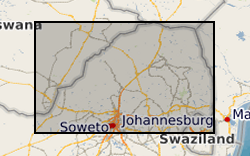
Monthly time-series data of GRACE (Gravity Recovery and Climate Experiment) total terrestrial water storage (TWS), GLDAS (Global Land Data Assimilation System) soil moisture, surface water (surface runoff), snow water storage, and basin-aggregated observations from piezometric data for the Makutapora Basin (Tanzania) and Limpopo Basin (South Africa).
-
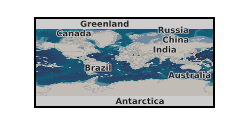
This poster on the UKCCSRC (UK Carbon Capture and Storage Research Centre) Call 1 project, Multi-Phase Flow Modelling for Hazardous Assessment, was presented at the Cranfield Biannual, 21.04.15. Grant number: UKCCSRC-C1-07.
 NERC Data Catalogue Service
NERC Data Catalogue Service